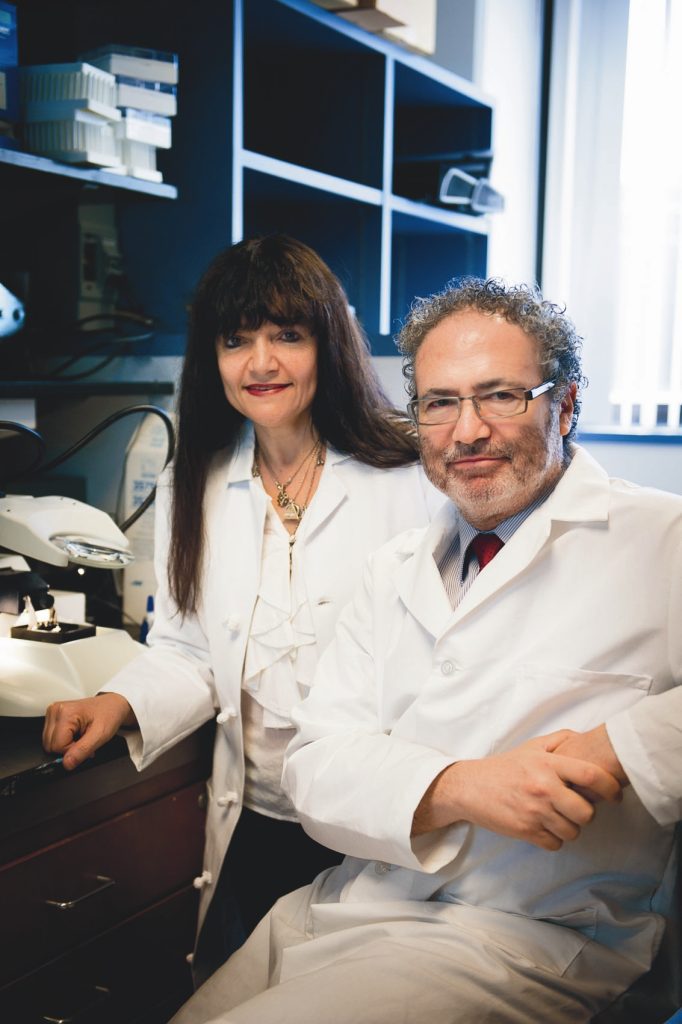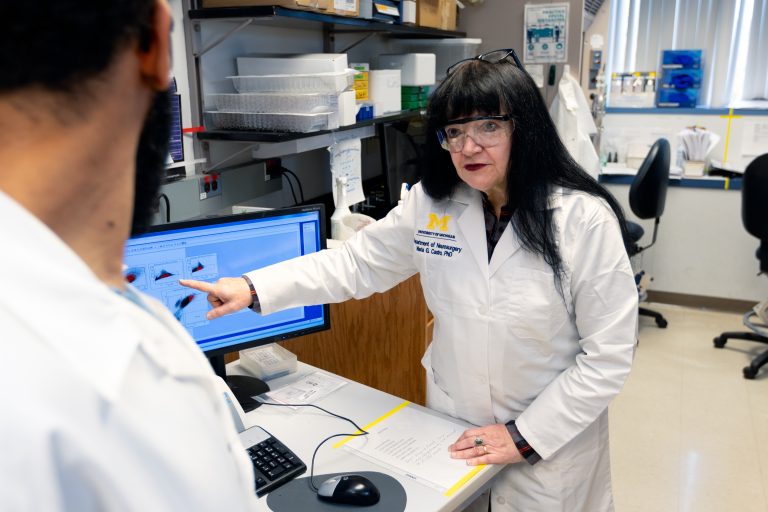
“This research was a labor of love over many years and the longevity that the funding provided was critical to scaling large projects over time.”
Before she began her first professorship at the University of Manchester in England, Dr. Maria Castro had focused most of her work on neurodegenerative disorders, such as Parkinson’s disease.
But after meeting different colleagues and exploring other focus areas, brain cancer became a new field of interest. She was quickly immersed in the world of cancer progression and novel therapeutics.
“At the time, no one was really interested in brain cancer research. Not big pharma, not funding agencies – it was a narrow field of research,” Castro said.“ But, I saw a need. I was interested in the biology of it and wanted to make a difference in people’s lives.”
With the goal of examining the biology of brain cancer, Dr. Castro opened her first lab at Manchester. Working closely with colleagues, she spent the next few years homing in on what exactly she wanted to research and where she could make the greatest impact.
One of her closest collaborators during that time was Dr. Pedro Lowenstein, a fellow neurosurgery professor who was exploring the use of viruses for therapeutic intent.
As the two worked together, they recognized significant crossover in their research questions: How do certain changes in gene activity affect cancer growth? And how do cells fix damaged DNA?
The two researchers were then recruited by UCLA and Cedars-Sinai Medical Center to open a gene therapy lab, where they would continue to explore the somewhat unknown frontier of brain cancer research. There, they worked to secure federal funding for their work, partnering with the National Institutes of Health and numerous philanthropic organizations. Much of their work – almost 20 years of it – has been funded through the NIH.
“This research was a labor of love over many years and the longevity that the funding provided was critical to scaling large projects over time,” Castro said.
Following their success at UCLA, Castro and Lowenstein were recruited by the University of Michigan to expand their research efforts and train Michigan Medicine neurosurgeons, work they have led for more than a decade.
At the center of their research is a human clinical trial for aggressive brain tumors known as high-grade gliomas. The trial, which is ongoing in U-M’s Department of Neurosurgery and is the first of its kind, seeks to assess the safety and effects of a new gene therapy for adults that combines two approaches: one that directly kills cancer cells and another that stimulates the immune system to attack the tumor.
According to the phase 1 trial results, published in 2023 by Drs. Castro and Lowenstein and more than 30 of their U-M colleagues, the therapy was well-tolerated and showed promising signs of effectiveness against the tumors.
This means gene therapy could be a potential future treatment option for patients with high-grade gliomas – a significant advancement in brain cancer research.
Without that consistent financial support from both foundation partners and the federal government over decades, these breakthroughs would have never been possible, they said.
“The longevity and large scale of our work has been made possible by our partnerships with federal agencies,” Lowenstein said.“ Research like this takes time, considerable time, to measure and explore and adjust. By being able to conduct projects like the one at U-M over decades, we are able to make significant advancements that would not be possible without those dedicated partners.”

